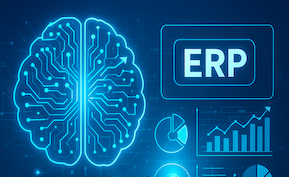AI-Driven Customer Segmentation: Using Machine Learning to Personalize CRM Strategies
Introduction: In today’s competitive marketplace, one-size-fits-all marketing and sales strategies are increasingly ineffective. Customers expect personalized experiences, tailored offers, and communication that aligns with their preferences and behaviors. AI-driven customer segmentation within CRM systems allows businesses to go beyond traditional demographic or transactional data, leveraging machine learning (ML) to identify patterns, predict behaviors, and deliver highly personalized engagement. This article explores the role of AI in customer segmentation, its benefits, practical applications, implementation strategies, and best practices for modern CRM initiatives.
What Is AI-Driven Customer Segmentation?
AI-driven customer segmentation uses machine learning algorithms to analyze large datasets, uncover hidden patterns, and group customers based on predicted behaviors rather than just static attributes. Unlike traditional segmentation—often based on age, location, or purchase history—AI segmentation can identify nuanced patterns, such as likelihood to purchase, churn risk, engagement level, or preferred communication channel. By integrating these insights into CRM systems, businesses can tailor marketing, sales, and support strategies to each segment, improving effectiveness and customer satisfaction.
Key Benefits of AI-Driven Segmentation
Organizations leveraging AI-driven segmentation within CRM experience multiple advantages:
- Enhanced Personalization: Deliver messaging, offers, and content that aligns with predicted customer needs.
- Improved Conversion Rates: Target high-value segments with the right product, offer, or timing, increasing the likelihood of purchase.
- Reduced Churn: Identify at-risk customers early and deploy retention campaigns tailored to each segment.
- Efficient Resource Allocation: Focus marketing, sales, and support efforts where they will have the greatest impact.
- Actionable Insights: Machine learning uncovers patterns that human analysts may miss, guiding smarter decision-making.
Use Cases for AI-Driven CRM Segmentation
AI-driven segmentation applies to multiple areas of customer management:
- Marketing Campaigns: Tailor email, social, and advertising campaigns based on predicted customer preferences and engagement likelihood.
- Sales Prioritization: Identify leads or accounts with the highest probability to convert and focus sales efforts efficiently.
- Customer Retention: Detect early signs of churn, such as reduced engagement, and trigger targeted retention initiatives.
- Product Recommendations: Suggest upsells, cross-sells, or new products based on patterns observed in similar segments.
- Customer Support: Allocate support resources strategically based on segment behavior and potential lifetime value.
How AI Segmentation Works
AI-driven segmentation typically involves the following steps:
- Data Collection: Gather structured and unstructured data from CRM, social media, purchase history, and engagement metrics.
- Data Preparation: Clean, normalize, and transform data for analysis, ensuring accuracy and consistency.
- Feature Engineering: Identify predictive attributes, such as frequency of purchase, response to campaigns, or engagement score.
- Model Training: Machine learning algorithms, such as clustering, decision trees, or neural networks, identify patterns and segment customers.
- Integration: Segmentation results are integrated back into CRM systems for personalized campaigns and actionable insights.
- Continuous Learning: Models retrain automatically as new data comes in, keeping segments accurate over time.
Benefits for Marketing Teams
Marketing teams can harness AI segmentation to:
- Create hyper-targeted campaigns for high-value segments.
- Predict response rates and optimize messaging, timing, and channel selection.
- Reduce wasted ad spend on low-converting audiences.
- Measure engagement and ROI with more precise metrics.
Benefits for Sales Teams
Sales teams benefit by:
- Focusing on leads or accounts most likely to convert.
- Receiving predictive insights about customer needs or objections.
- Prioritizing follow-ups for segments with high lifetime value potential.
- Improving efficiency through intelligent account allocation and territory management.
Benefits for Customer Support
Customer support teams gain:
- Segmented views of customers by engagement, satisfaction, or risk level.
- Proactive retention campaigns for at-risk segments.
- Ability to tailor support workflows based on predicted needs.
- Enhanced understanding of which segments require premium or specialized service.
Challenges of AI Segmentation in CRM
While AI-driven segmentation offers many benefits, challenges include:
- Data Quality: Inaccurate or incomplete data can reduce model accuracy.
- Integration Complexity: Merging AI models with existing CRM workflows may require technical expertise.
- User Adoption: Teams must trust AI-driven segments and integrate them into daily activities.
- Privacy and Compliance: Collecting, processing, and analyzing customer data must comply with regulations like GDPR or CCPA.
- Model Transparency: Explaining AI-driven segments to stakeholders can be challenging if models are complex.
Privacy and Compliance Considerations
Best practices include:
- Ensure customer consent for data collection and analysis.
- Comply with local and international privacy regulations.
- Use anonymization and encryption where possible.
- Document AI decision-making processes to maintain transparency.
Metrics to Evaluate AI Segmentation Effectiveness
Key performance indicators include:
- Conversion Rate: Improvement in sales or campaign conversions for segmented audiences.
- Engagement Metrics: Click-through, open rates, or interaction frequency.
- Customer Retention: Reduction in churn for at-risk segments.
- Revenue per Segment: Increase in average revenue per AI-identified segment.
- Operational Efficiency: Time saved in campaign planning or sales follow-ups.
Case Example: E-Commerce Personalization Success
An e-commerce company integrated AI-driven segmentation into its CRM to identify high-value shoppers and predict purchasing behavior. By segmenting customers based on purchase frequency, browsing patterns, and engagement scores, marketing teams delivered personalized promotions and recommendations. Within six months, email engagement increased by 35%, average order value grew by 22%, and churn decreased by 15%, demonstrating the power of AI-driven insights for personalization and revenue growth.
Best Practices for AI-Driven Segmentation
- Start with clean, high-quality data from multiple sources.
- Choose AI models appropriate for your business goals, such as clustering or predictive modeling.
- Integrate segmentation results directly into CRM workflows and automation.
- Monitor and retrain models regularly to adapt to evolving customer behavior.
- Train teams to interpret AI-driven segments and act on insights confidently.
- Ensure compliance with privacy regulations and secure data handling.
Future Outlook
AI-driven customer segmentation will continue to evolve, with trends including:
- Real-time segmentation based on live customer behavior and engagement.
- Integration of multi-channel data, including social, mobile, and IoT interactions.
- Predictive personalization across marketing, sales, and support.
- Greater explainability of AI-driven segments for stakeholder trust.
- Automated adaptive strategies that respond instantly to segment shifts.
Conclusion
AI-driven customer segmentation represents a transformative opportunity for modern CRM strategies. By leveraging machine learning to uncover patterns, predict behavior, and deliver personalized engagement, organizations can improve marketing effectiveness, sales conversions, and customer retention. While challenges such as data quality, privacy, and adoption exist, following best practices ensures that AI segmentation becomes a strategic asset for driving personalized, revenue-generating customer relationships.







